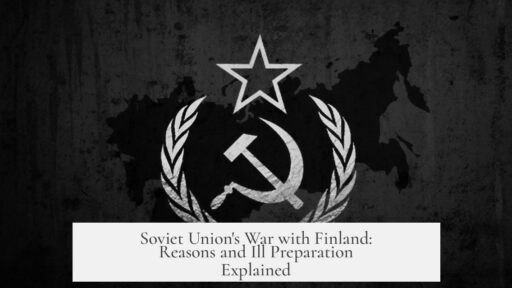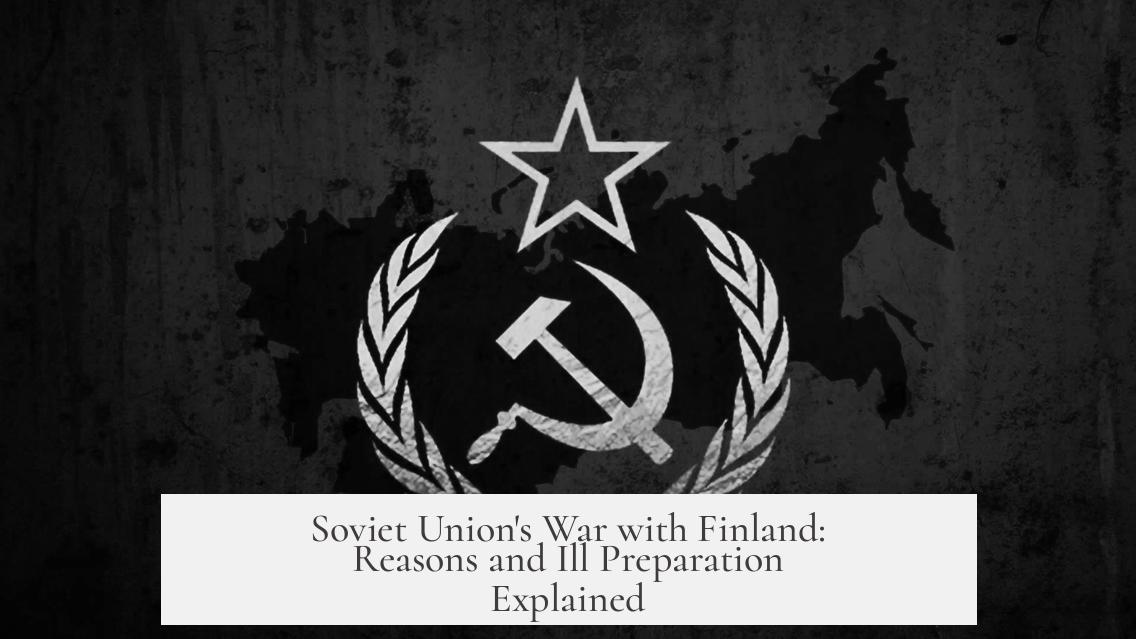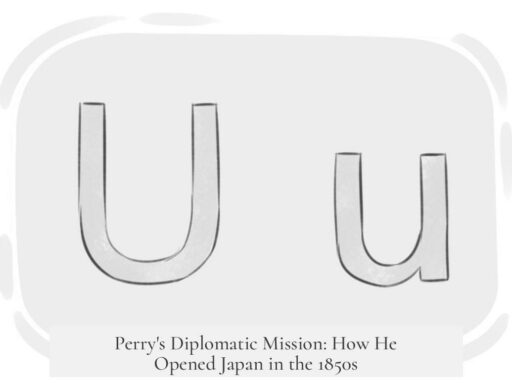The Soviet Union went to war with Finland primarily to secure its northwestern border and protect Leningrad from perceived threats, aiming to reclaim territory lost after the fall of the Tsarist empire and to establish a buffer zone against Nazi Germany. Despite its large military, the USSR was ill prepared due to leadership purges, unsuitable tactics, and harsh winter conditions that favored the Finnish defenders.
The conflict begins with Stalin’s strategic goals. After securing an informal agreement with Nazi Germany, he sought to restore Soviet control over former Tsarist lands. This included the Baltic states and parts of Eastern Poland, but also Finland. The USSR demanded territorial concessions—Petsamo, Viipuri, and Hanko—to protect Leningrad, which is less than 40 kilometers from the Finnish border. Soviet leaders feared a German advance through Finland could threaten the city.
Before launching the war, the Soviet Union tried to secure a military alliance or guarantee from Finland to resist Germany in case of invasion. Finland, committed to neutrality and suspicious of Soviet intentions, refused to cede any sovereignty. This distrust, combined with rising Soviet demands, escalated tensions. Soviet propaganda justified intervention as necessary to safeguard sea and land approaches to Leningrad. Claims that Finnish forces fired on Soviet troops—later shown to originate from Soviet positions—gave the Kremlin a casus belli.
The Soviets expected a swift victory, assuming victory would be welcomed by Finnish communists and that their overwhelming forces would crush resistance. Instead, they met vigorous Finnish defense, backed by political unity. Despite socialist divisions in Finland’s past civil war, the invasion united Finnish factions. Furthermore, Soviet purges had decimated experienced Finnish communists, diminishing internal support for Moscow.
One major reason for Soviet unpreparedness is Stalin’s purges of the Red Army command from 1935 to 1939. These targeted military leadership, removing or executing the majority of high-ranking officers, including marshals, admirals, and divisional commanders. This created a vacuum in expertise and fostered fear of dissent within the ranks. Commanders gave orders without adaptation or critical assessment, following rigid tactical doctrine.
Political commissars supervised military decisions, restricting commanders’ autonomy and flexibility in operations. This dual command system hampered initiative, especially in challenging terrain. The Soviet preference for frontal armored assaults showed a lack of tactical creativity, easily countered by Finnish troops, who used effective anti-tank measures and guerrilla tactics in forests and lakes.
The terrain itself complicates Soviet plans. Finnish geography, with dense forests, vast lakes, and limited roads, contrasts sharply with the open plains that suited German *Blitzkrieg* and Soviet doctrine. Despite attempts to duplicate German success, Soviet troops were ill-equipped for such conditions. Finnish soldiers, skilled in skiing and familiar with the landscape, held a decisive edge in mobility and surprise.
Winter exacerbated Soviet difficulties. The 1939-1940 winter was harsh and cold. Many Soviet units lacked adequate winter gear and suffered from frostbite, sometimes losing 10% of their personnel before engagement. The Red Army had insufficient winter shelters and poor logistical support. Field hospitals operated in subzero temperatures, leading to high casualties and reduced fighting capacity.
Additionally, the Soviet air force, or “flying artillery,” lacked the effectiveness of the German Luftwaffe, providing limited support to ground troops. Soviet logistical challenges and poor coordination further undermined their ability to sustain offensive operations in the prolonged war.
Finnish resilience was grounded in national unity, recent combat experience, and specialized winter warfare skills. Finnish forces used guerrilla tactics, mobility on skis, and knowledge of the terrain to offset numerical inferiority. Soviet assumptions of quick success never materialized, exposing deep flaws in preparation and command.
| Key Factors | Details |
|---|---|
| Geopolitical Motive | Protect Leningrad; reclaim former Tsarist territories; strategic buffer against Germany |
| Failed Diplomacy | Rejected Soviet alliance offers; Finnish neutrality and sovereignty concerns |
| Leadership Purges | High officer casualties from 1935–39 purges; loss of experience and command flexibility |
| Unsuitable Tactics | Frontal armored charges; inflexible strategy; lack of adaptation to terrain |
| Environmental Challenges | Difficult forests and lakes; severe winter; limited Soviet skiing skills and gear |
| Finnish Resistance | Unified by national resolve; effective winter warfare skills; guerrilla tactics |
- The Soviet invasion aimed to secure Leningrad by pushing Finland into a buffer zone.
- Stalin’s purges destroyed the Red Army’s command effectiveness and flexibility.
- Soviet tactics failed against Finland’s terrain and winter conditions.
- Finnish national unity and specialized skills offset Soviet numerical superiority.
- The war revealed flaws in Soviet military doctrine and preparation before World War II.




